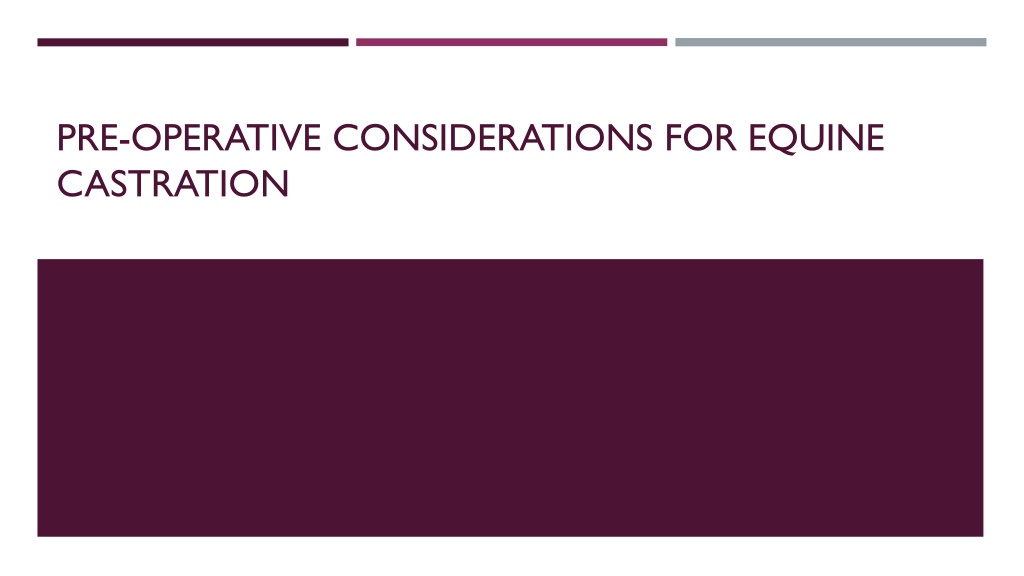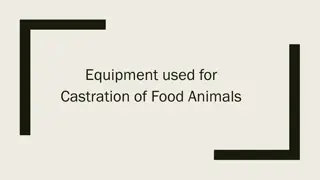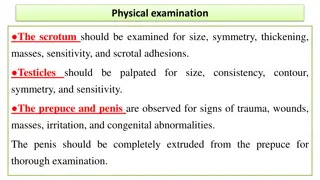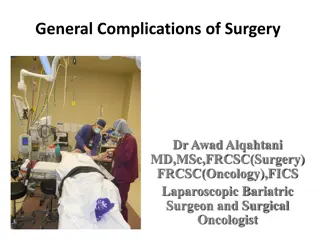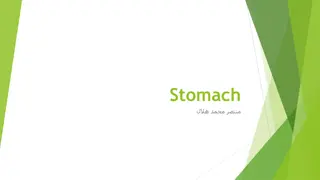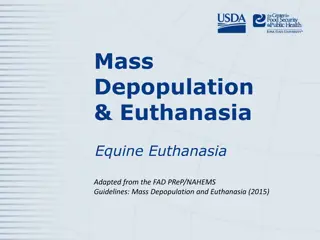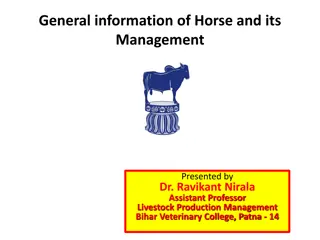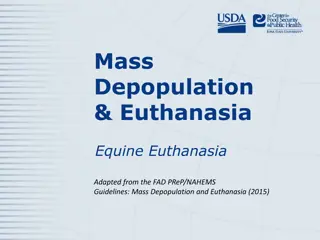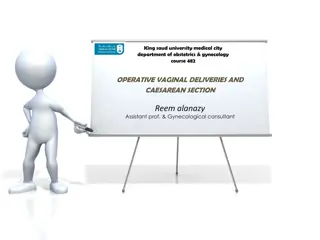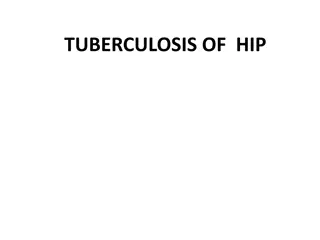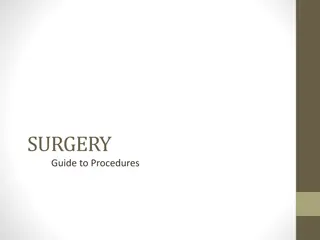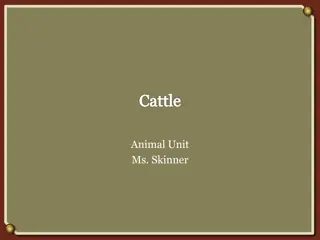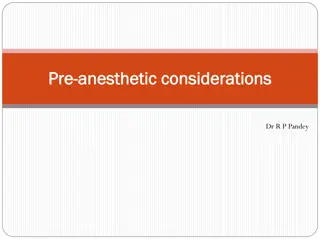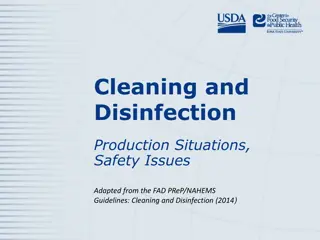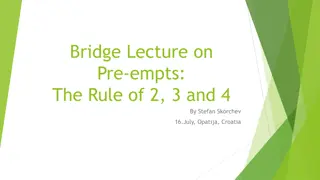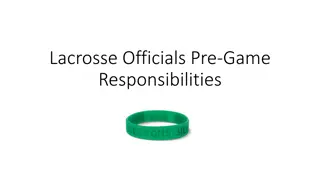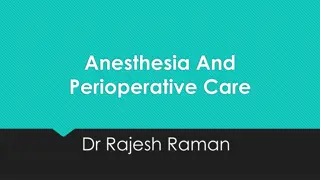Pre-Operative Considerations for Equine Castration
Selection of a technique, common agents used to anaesthetize horses, scrubbing procedure, and blocking method are essential pre-operative considerations for equine castration. Closed and half-closed techniques decrease post-operative complications, while various agents can be used for sedation. Proper scrubbing and blocking techniques are crucial for minimizing infection risk and ensuring effective anesthesia during the procedure.
Download Presentation

Please find below an Image/Link to download the presentation.
The content on the website is provided AS IS for your information and personal use only. It may not be sold, licensed, or shared on other websites without obtaining consent from the author. Download presentation by click this link. If you encounter any issues during the download, it is possible that the publisher has removed the file from their server.
E N D
Presentation Transcript
PRE-OPERATIVE CONSIDERATIONS FOR EQUINE CASTRATION
SELECTION OF A TECHNIQUE An advantage of the closed and half-closed techniques of castration is that removal of the parietal tunic decreases the incidence of postoperative complications, such as septic funiculitis and hydrocele. The half-closed technique permits inspection of the components of the cord and allows a greater portion of the ductus deferens and testicular vasculature to be exteriorized. For horses at risk of having an unapparent inguinal hernia, such as Standardbreds, evisceration can be avoided by using a closed technique and placing a ligature proximal to the proposed site of transection. The closed technique of castration has no advantage over the open technique in preventing evisceration if a ligature is not applied to the cord proximal to the site of transection. The closed and half-closed techniques are indicated for disease conditions that may involve the parietal tunic, such as and orchitis. The closed and half-closed techniques require more dissection than does the open method of castration, and this may be a disadvantage when performing a standing castration on a fractious stallion.
COMMON AGENTS USED TO ANAESTHETIZE HORSES FOR CASTRATION Thiobarbiturates following sedation with xylazine. Ketamine HCl following sedation with xylazine, detomidine, or romifidine. Guaifenesin (5 10%) in combination with ketamine HCl or a thiobarbiturate. Succinylcholine can be used to immobilize horses, but it provides no analgesia, and its use to restrain horses for castration is inhumane
SCRUB Place bucket behind patients leg. The bucket should contain A.1/3 to full of water B. Disinfectant; strong tea colored if using betadine, 3 ounces per gallon if using nolvasan C. Practical/ pound cotton torn D. Spray or squeeze bottle of scrub floating in the bucket Always return scrub to bucket after use, never set down on ground. Place your body against the inside of the leg so that the foot is beside your shoulder. Squirt or spray the scrotum with scrub. Remove a handful of cotton from the bucket, squeeze of the water from it, and scrub the scrotum thoroughly. For hernias or cryptorchids us a prep sponge. Do not place used sponges into the clean water bucket. Rinse with clean water from the prep bucket.
BLOCK To increase exposure, minimize stimulation caused by manipulating the teste and stripping the cord, and paralyze the cremaster and tunic muscles. Increased exposure and muscle paralysis are also useful in the case of post operative bleeding. Use a 35 cc syringe filled with block (cabocaine or lidocaine) and an18 gauge needle. Inject 10 mls block into the each spermatic cord. Isolate and grasp the spermatic cord firmly. Insert the needle where the cord rolls over your thumb and index finger, aspirate to insure you re not in a vessel, and inject 10 ml carbocaine into each cord. To work your needle must be in the cord. The block will not migrate across the tunic. Or Inject directly into the center of each testis until you feel them become turgid (full). This is easier to learn, but takes more time and anesthetic, as it must migrate up the cord. If the team is efficient, the castration may be completed before the anesthetic has taken effect. Slide the needle under the skin and inject 5-7 mls of block where you plan to incise. Replace the needle on the carbocaine syringe and refill.
